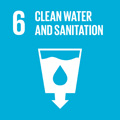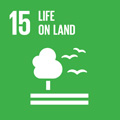- Docente: Dario Frascari
- Credits: 6
- SSD: ING-IND/27
- Language: Italian
- Moduli: Dario Frascari (Modulo 1) Davide Pinelli (Modulo 2)
- Teaching Mode: Traditional lectures (Modulo 1) Traditional lectures (Modulo 2)
- Campus: Bologna
-
Corso:
Second cycle degree programme (LM) in
Chemical and Process Engineering (cod. 8896)
Also valid for Second cycle degree programme (LM) in Environmental Engineering (cod. 8894)
-
from Feb 20, 2025 to Jun 12, 2025
-
from Feb 19, 2025 to Apr 16, 2025
Learning outcomes
The course aims to address the mqin aspects related to the remediation of groundwater and soils. In particular, the following topics will be covered: key elements of relevant legislation, risk analysis for contaminated sites, contaminant transport in aquifers, biological and non-biological technologies for site remediation.
Course contents
Recommended Prerequisites
Students enrolling in this course should have basic knowledge of chemistry, physico-chemistry, and material balances.
All lectures will be conducted in Italian, so an understanding of the Italian language is necessary to successfully follow the course. Some of the teaching materials will be in English, so a good understanding of written English is also recommended.
Program
- Introduction to soil contamination issues (contaminated sites, mechanisms of contamination propagation).
- Soil and its components. Main pollutants (Hydrocarbons, Metals, CAHs, PAHs, BTEX, PCBs, Dioxins, Pesticides, etc.), their origin and characteristics.
- Interactions between contaminants and soil. Distribution of pollutants in solid, liquid, gaseous, and non-aqueous liquid phases (NAPL); determination of NAPL presence and equilibrium composition (single and multi-component cases).
- Transport phenomena between phases in soils and experimental determination of mass transport coefficients.
- Overview of fluid flow in porous media (single-, bi-, and tri-phase) and pollutant transport in unsaturated and saturated zones; simplified analytical solutions.
- Relevant regulations and legislation.
- Site characterization: investigation methods and data evaluation.
- Principles of operation, applicability, limitations, and sizing methods of key technologies for in situ and on-site remediation of soils and groundwater.
- Introduction to Risk Analysis for contaminated sites (identification of source and representative concentrations, exposure pathways, critical assessment of transport models, identification of targets and exposure parameters, risk calculation, and remediation targets).
Readings/Bibliography
1)Slides provided by the instructors
2) D. Russell, Remediation Manual for Contaminated Sites, CRC Press / Routledge, 2024.
3) Contaminant Hydrogeology, C. W. Fetter, second edition, Prentice Hall, NJ, 1993.
Internet resources:
Clean-up Information (CLU-IN) web site CLU-IN homepage [http://www.clu-in.org/] http://www.clu-in.org/
REACHIT : REmediation And CHaracterisation Innovative Technologies http://www.epareachit.org/index3.html
EPA : http://www.epa.gov/
ISPRA (ex-APAT) :http://www.apat.gov.it/site/it-it/apat/
NICOLE : http://www.nicole.org/
Teaching methods
The course includes classroom lectures and exercises on the course topics.
Some topics will include additional exercises to be completed outside of class, which will be reviewed in subsequent lectures.
Assessment methods
The exam consists of a written test, which will include one or two problems involving the sizing of a remediation process for a contaminated site, pollutant transport and distribution, or risk analysis, along with some theoretical questions.
The exam aims to assess i) the ability to evaluate pollutant distribution and transport issues, ii) basic legislative knowledge, ii) the understand of fundamental aspects and main challenges of risk analysis, and iv) the ability to select and design the main remediation technologies presented in the course.
Teaching tools
The course slides will be uploaded to the Virtuale platform in advance of the corresponding lectures.
The course also includes in-class exercises involving the sizing of processes for the remediation of contaminated sites. Both the texts and solutions of all exercises will be available on Virtuale.
Office hours
See the website of Dario Frascari
See the website of Davide Pinelli
SDGs



This teaching activity contributes to the achievement of the Sustainable Development Goals of the UN 2030 Agenda.
